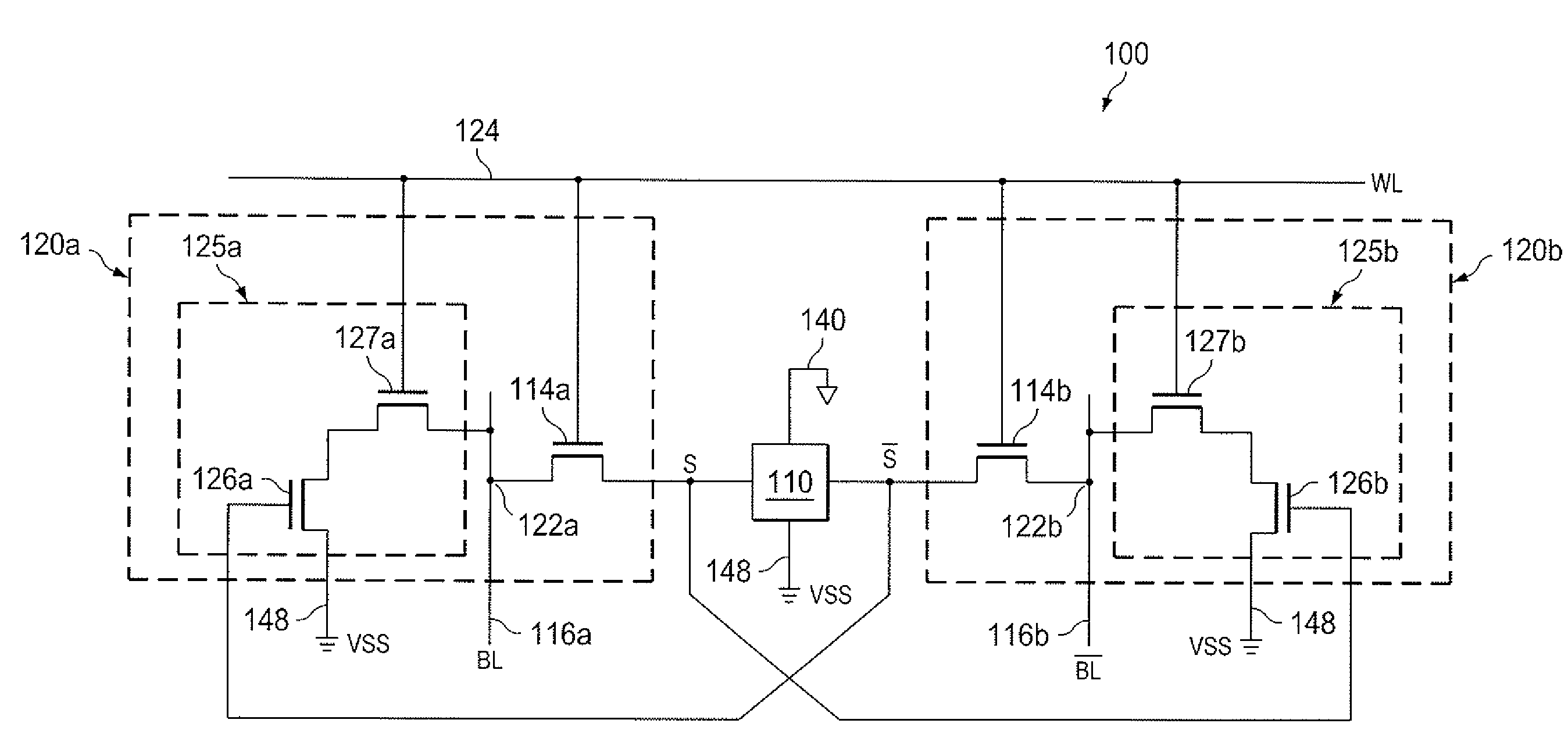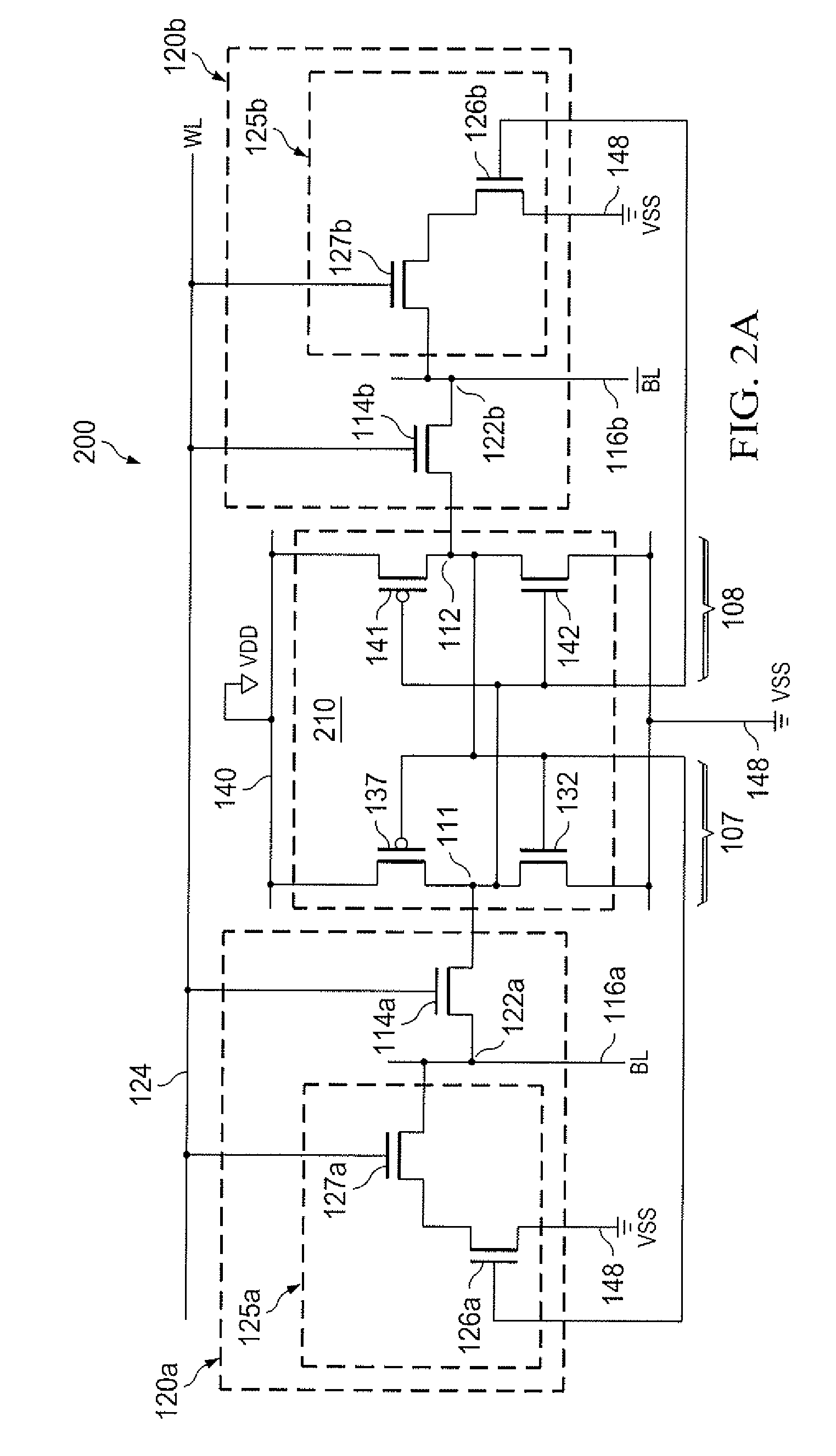Dual node access storage cell having buffer circuits
a buffer circuit and storage cell technology, applied in the field of integrated circuits having dual node access memory cells, can solve the problems of affecting the robustness of write, and affecting the stability of the cell,
- Summary
- Abstract
- Description
- Claims
- Application Information
AI Technical Summary
Problems solved by technology
Method used
Image
Examples
first embodiment
[0050]In one embodiment of the invention, a more robust WRITE operation can be achieved by using two or more different voltage levels on the WL during a WRITE operation. This is conceptually illustrated in FIG. 2F. FIG. 2F is a timing diagram showing the operation of a memory cell, such as cells 200 or 250, through a READ cycle, a WRITE cycle and a Standby cycle, in a first embodiment that realizes a delayed boosted WL level during a WRITE operation. As shown in FIG. 2F, during a WRITE operation the READ / WRITE WL 124 shown in FIGS. 2A and 2B can transition initially to a first voltage level and later during the WRITE operation transition to a second voltage level that is a higher as compared to the first voltage level. Boosting the WL voltage in the WRITE cycle after some delay time allows an initial establishment of a voltage on the BL's of the half addressed cells which can improve the stability of the half selected cells while the delayed boost of the WL can lead to a more robust...
second embodiment
[0051]FIG. 2G is a timing diagram showing the operation of a memory cell according to an embodiment of the invention through a READ cycle, a WRITE cycle and a Standby cycle, in a second embodiment that realizes a delayed boosted WL, level during a WRITE operation. During the WRITE operation shown the WL 124 initially rises to a level below VDD, then after a delay sufficient for the establishment of a stable voltage on the BL's of the half addressed cells, WL, rises to VDD.
[0052]FIG. 3A is a schematic of a 10 T cell 300 with a common READ / WRITE BL's (BL 116a and BL116b) with common READ / WRITE WL 124, in an alternate topology for generally improved stability, according to another embodiment of the invention. As shown in FIG. 3A BL 116a and BL116b are now connected to the drains of buffer pass transistors 127a and 127b, respectively. The source of buffer pass transistors 127a and 127b are now connected to the drain of buffer driver transistors 126a and 126b, respectively. For cell 300,...
PUM
 Login to View More
Login to View More Abstract
Description
Claims
Application Information
 Login to View More
Login to View More - R&D
- Intellectual Property
- Life Sciences
- Materials
- Tech Scout
- Unparalleled Data Quality
- Higher Quality Content
- 60% Fewer Hallucinations
Browse by: Latest US Patents, China's latest patents, Technical Efficacy Thesaurus, Application Domain, Technology Topic, Popular Technical Reports.
© 2025 PatSnap. All rights reserved.Legal|Privacy policy|Modern Slavery Act Transparency Statement|Sitemap|About US| Contact US: help@patsnap.com



